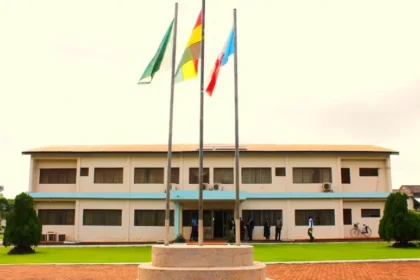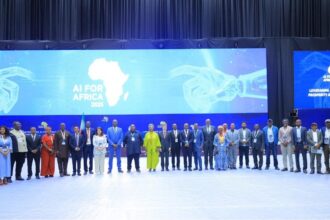When Ghana unfurled its national flag for the first time on March 6, 1957, it wasn’t just marking independence from British colonial rule; it was announcing its identity to the world. Bold, vibrant, and deeply symbolic, the flag was the work of Theodosia Salome Okoh, a visionary artist whose design captured the soul of a nation in transition. Today, her creation remains one of the most iconic emblems of African pride and unity.
Theodosia Okoh: The Woman Behind the Ghana Flag
Born in Wenchi in the Brong-Ahafo Region on June 13, 1922, Theodosia Okoh was more than just a gifted artist; she was a cultural architect. Educated at Achimota School, one of Ghana’s premier schools in Accra, Okoh honed her skills in visual arts and developed a keen understanding of symbolism and design.
When the opportunity arose to design a flag for the newly independent Ghana, she approached it not just as an artistic challenge, but as a chance to reflect the hopes, struggles, and spirit of her people.
Her design was selected through a national competition, chosen for its clarity, simplicity, and powerful symbolism. But behind its clean lines and bold colors lay a tapestry of meaning.
The Ghanaian flag consists of three horizontal stripes, red, yellow, and green, with a black five-pointed star centered in the yellow band. Each element tells a story:
- Red: A tribute to the blood shed by freedom fighters who resisted colonial rule. It’s a reminder of the sacrifices that paved the way for independence.
- Yellow (Gold): Symbolizes Ghana’s wealth, particularly its rich reserves of gold. Once known as the Gold Coast, the country’s natural resources have long shaped its economic and cultural identity.
- Green: Represents Ghana’s lush vegetation and agricultural heritage. It speaks to the land’s fertility and the sustenance it provides.
- Black Star: A beacon of African emancipation and unity. Inspired by the Pan-African movement, it reflects Ghana’s leadership in the fight for continental liberation.
Roots
Okoh’s design didn’t emerge in isolation. It was deeply influenced by Pan-African ideals and the Ethiopian flag, which had become a symbol of resistance and independence across Africa. Ethiopia’s successful defiance of European colonization made the colors a rallying cry for African nations seeking freedom. By incorporating these hues, Okoh aligned Ghana with a broader continental vision of unity and self-determination.
While Okoh’s flag design is her most celebrated contribution, her impact extended far beyond the realm of art. She was a passionate advocate for sports, particularly hockey, and played a pivotal role in establishing the Ghana Hockey Association. Serving as its president for several years, she championed youth development and helped grow the sport nationwide.
Her dual legacy in arts and athletics earned her widespread recognition. In 2004, the Government of Ghana awarded her the Grand Medal for her role in designing the flag. A hockey stadium in Accra now bears her name. A fitting tribute to a woman who shaped both the cultural and sporting landscapes of her country.
Like any national symbol, the Ghanaian flag has faced its share of criticism. Some have argued that its design is too simplistic or that the black star evokes colonial imagery. Yet these critiques have done little to diminish its resonance. The flag remains a powerful emblem of Ghana’s journey and its place in the global African narrative.
Interestingly, the flag underwent a brief transformation between 1964 and 1966, when the yellow stripe was replaced with white to reflect the country’s socialist leanings under President Kwame Nkrumah. After his government was overthrown, the original design was reinstated, restoring Okoh’s vision and reaffirming the flag’s enduring symbolism.
Theodosia’s Reflections
In interviews, Theodosia Okoh often spoke of the emotional weight the flag carried. She saw it not just as a design, but as a living symbol of unity, patriotism, and resilience. Her reflections reveal a deep connection to the flag’s meaning and a profound pride in its role in shaping Ghana’s identity.
Today, the Ghanaian flag flies high not just in Accra, but in hearts across the nation and the diaspora. It’s more than fabric, it’s a story stitched with courage, hope, and vision. And at its center is Theodosia Okoh, whose artistry and foresight gave Ghana a symbol that continues to inspire generations.
Her legacy reminds us that design is never just about aesthetics, it’s about meaning. And when done right, it can become the soul of a nation like Ghana.









